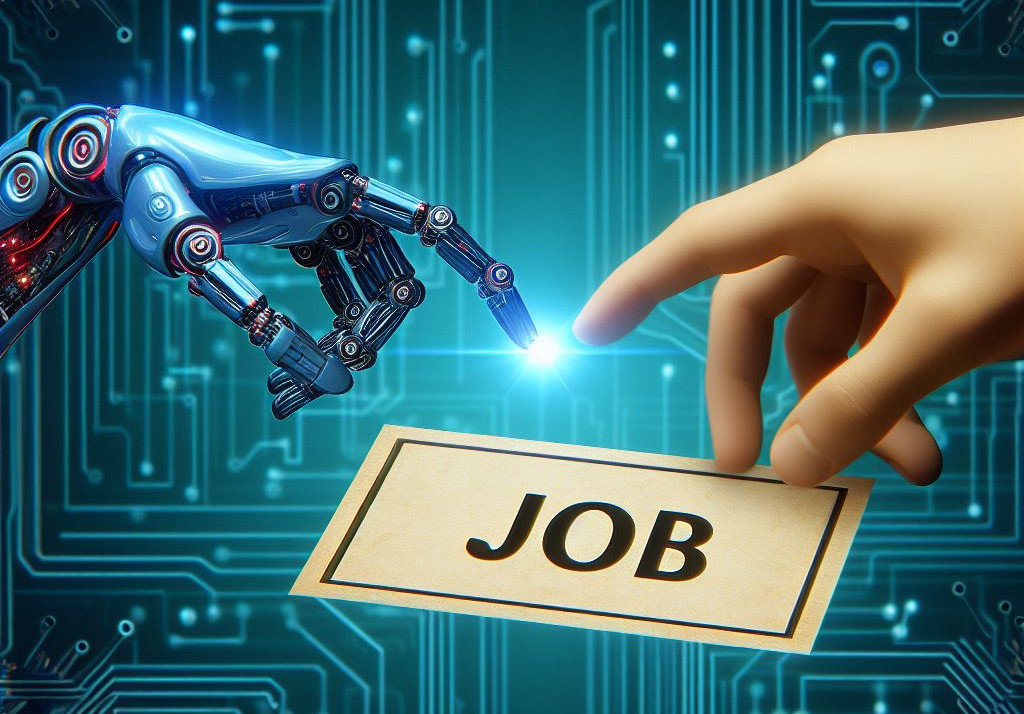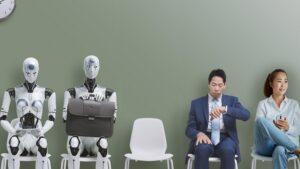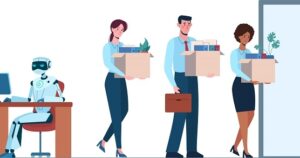AI and Job Losses: Navigating the Shifting Landscape of Work
Introduction
Artificial Intelligence (AI) has quickly moved from science fiction to the center of everyday reality. From chatbots answering customer queries to algorithms screening job applications, and from self-driving technologies to AI-powered content creation tools, intelligent machines are reshaping how work is performed across industries. But with these rapid advancements comes an inevitable question: Will AI take away our jobs?
While AI promises efficiency, innovation, and productivity, it also raises concerns about automation replacing human labor. Economists, business leaders, and workers alike are grappling with the implications of AI on employment. Some argue that AI will eliminate millions of jobs, while others believe it will create new roles that we cannot yet imagine. The truth likely lies somewhere in between.
This article explores AI’s impact on job losses, the industries most at risk, the kinds of jobs being created, the global outlook, and strategies to adapt to this monumental shift in the world of work.
1. The Automation Debate: Threat or Opportunity?
The idea that technology disrupts jobs is not new. History has seen waves of automation — from the Industrial Revolution’s textile machines to the rise of computers in offices. Each wave eliminated certain jobs but also created new ones.
What makes AI different is its cognitive ability. Unlike earlier forms of automation that replaced manual labor, AI can also perform tasks that involve reasoning, analysis, and creativity. That’s why the current debate feels more urgent — AI is not just taking over repetitive tasks, but it’s also entering domains once thought to be uniquely human.
-
Optimists believe AI will augment human capabilities, making people more productive and creating entirely new industries.
-
Pessimists warn of massive unemployment, inequality, and social unrest if AI adoption outpaces our ability to adapt.
2. Jobs Most at Risk from AI
AI’s impact varies widely across industries. Some jobs are highly vulnerable to automation, while others are relatively safe.
a. High-Risk Jobs
-
Customer service representatives: AI chatbots can handle inquiries 24/7 at lower costs.
-
Data entry clerks: Algorithms can process, verify, and manage information faster than humans.
-
Telemarketers: Automated systems can deliver targeted messages and handle basic interactions.
-
Basic accounting and bookkeeping: AI-driven software like QuickBooks and Xero already automate bookkeeping.
-
Transportation and logistics: Self-driving vehicles and drones threaten jobs in trucking, delivery, and taxi services.
b. Medium-Risk Jobs
-
Journalists and content creators: AI can draft articles, but human oversight is still needed for creativity, nuance, and ethics.
-
Healthcare diagnostics: AI tools are becoming better at detecting diseases, potentially reducing demand for radiologists and pathologists.
-
Manufacturing: Robots handle repetitive assembly tasks, though complex manufacturing still requires human oversight.
c. Low-Risk Jobs
-
Creative arts: Roles requiring originality, empathy, and human touch, like musicians, artists, or actors, remain safer.
-
Healthcare professionals: Nurses, therapists, and doctors who provide care and human interaction are less likely to be replaced.
-
Skilled trades: Electricians, plumbers, and carpenters work in dynamic environments that are hard to automate.
-
Leadership and management: Decision-making, strategic thinking, and people management remain critical human strengths.
3. Global Impact of AI on Employment
Different regions will experience AI’s disruption in unique ways:
-
Developed economies: Countries with high labor costs, like the US, UK, and Japan, are investing heavily in automation. Job displacement may be significant, but new high-tech roles could balance losses.
-
Developing economies: Nations like India and the Philippines, reliant on outsourcing and low-cost labor, face unique risks. AI-powered automation threatens call centers and back-office roles that form the backbone of their economies.
-
China: As a leader in AI development, China is both embracing automation and managing its vast workforce. Its policies may serve as a blueprint for balancing efficiency with employment.
According to the World Economic Forum (2023), AI will displace 85 million jobs by 2025, but it could also create 97 million new ones. The challenge lies in whether workers can transition to those new opportunities.
4. AI and Job Creation: The Other Side of the Coin
While fears of job loss dominate headlines, AI is also creating new roles:
-
AI specialists and engineers: Designing, training, and maintaining AI systems.
-
Data scientists and analysts: Extracting insights from massive datasets.
-
Ethics and compliance officers: Ensuring AI systems are transparent and unbiased.
-
AI trainers and prompt engineers: Teaching AI systems language, behavior, and contextual relevance.
-
Human-AI collaboration managers: Overseeing workflows where humans and AI systems complement each other.
Furthermore, AI is enabling entrepreneurship. Small businesses can use AI for marketing, logistics, and product development at lower costs, sparking innovation and new job opportunities.
5. Ethical and Social Concerns
The debate around AI and jobs is not just economic—it is deeply ethical.
-
Inequality: Wealth generated by AI often concentrates among big tech companies, leaving workers behind.
-
Reskilling gaps: Not everyone can easily transition from a redundant job to a high-tech role.
-
Bias in AI: Automated hiring systems can replicate biases, unfairly excluding candidates.
-
Mental health: Fear of job insecurity can lead to stress, anxiety, and reduced workplace morale.
Without careful policies, AI could widen the gap between the “AI-rich” and the “AI-poor.”
6. Strategies for Workers
Workers need to rethink their approach to careers in an AI-driven economy. Key strategies include:
-
Continuous learning: Lifelong education is now essential. Online platforms like Coursera and edX provide affordable upskilling.
-
Soft skills development: Creativity, critical thinking, emotional intelligence, and adaptability remain uniquely human strengths.
-
Tech literacy: Even non-technical workers benefit from understanding how AI systems work.
-
Entrepreneurship mindset: Viewing AI as a tool for innovation rather than a threat.
7. Strategies for Businesses
Companies face the delicate balance of leveraging AI while managing human resources. Best practices include:
-
Human-AI collaboration: Instead of full replacement, blend automation with human oversight.
-
Reskilling programs: Investing in training employees for new roles rather than mass layoffs.
-
Transparency: Communicating openly with workers about AI adoption plans.
-
Ethical AI deployment: Avoiding over-reliance on AI in sensitive tasks like hiring, justice, or healthcare.
8. Government and Policy Role
Governments must ensure AI adoption does not destabilize societies. Policy measures may include:
-
Universal Basic Income (UBI): Providing a safety net for displaced workers.
-
Reskilling subsidies: Funding training programs for workers in transition.
-
Tax reforms: Considering robot or AI taxes to redistribute wealth.
-
Labor laws update: Revising regulations to address AI-driven work environments.
-
Global collaboration: Creating international frameworks for AI ethics, safety, and workforce impact.
9. Case Studies
a. The Banking Sector
Banks worldwide are using AI for fraud detection, chatbots, and risk analysis. While this reduces the need for customer service clerks, it has increased demand for data scientists and AI compliance officers.
b. Manufacturing in Germany
Germany’s “Industry 4.0” strategy has automated factories but simultaneously invested in upskilling workers to handle smart systems. Job losses are mitigated by proactive policy.
c. India’s Outsourcing Industry
The Indian IT and BPO sector faces disruption as AI automates routine support tasks. However, Indian firms are pivoting toward AI development, creating new opportunities in innovation.
10. The Future of Work: Human-AI Symbiosis
The future may not be a battle between humans and machines but a partnership. AI is best at processing information, pattern recognition, and repetitive tasks, while humans excel at creativity, empathy, and ethical judgment.
Instead of “AI versus jobs,” the real challenge is “AI and jobs.” The goal should be to create an ecosystem where AI augments human potential rather than replaces it outright.
Conclusion
AI is undeniably transforming the job market. While millions of jobs will be lost to automation, millions more will be created in emerging industries. The disruption will not be painless — certain sectors and communities will bear the brunt of change. However, with the right balance of policy, business responsibility, and individual adaptability, society can harness AI as a force for progress rather than fear.
The future of work will be defined not by AI’s capabilities alone, but by how humans respond to its rise. Education, reskilling, ethical deployment, and global cooperation are essential to ensure that AI becomes a tool for empowerment rather than exclusion.
As history has shown, every technological revolution brings both risk and opportunity. The AI revolution is no different — except that this time, the speed and scale of transformation require us to prepare faster and smarter than ever before.
https://bitsofall.com/legal-challenges-against-ai-companies-copyright-infringement-training-models/
https://bitsofall.com/australias-biggest-bank-decides-not-to-replace-jobs-with-ai/
Bank’s AI Decision: Balancing Innovation, Trust, and Responsibility
AI Safety and Ethics: Navigating the Future of Intelligent Machines







